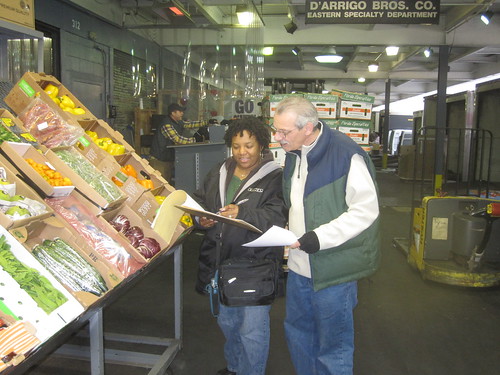
At some point in our lives, we all wonder what it would be like if we didn’t exist. How would things be different? Last month, American farmers and businesses experienced what it was like to live without USDA Market News. While the markets continued to operate, we received several phone calls and heard stories of how so many small and mid-sized producers struggled without the valuable information we provide.
In the 100-year history of Market News, this was only the second time that the data reports were not available. The reports give farmers, producers and other agricultural businesses the information they need to evaluate market conditions, identify trends, make purchasing decisions, monitor price patterns, evaluate transportation equipment needs and accurately assess movement. The information, gathered by the Agricultural Marketing Service (AMS) and provided for free, captures data for everything from cotton, fruits, vegetables and specialty crops, livestock, meats, poultry, eggs, grain and hay, to milk and dairy, and tobacco.
The data is released within hours of collection, allowing producers and marketers to quickly see which of their commodities are in the greatest demand at which markets. As an unbiased agricultural resource, USDA Market News helps encourage market stability by promoting healthy competition within the marketplace and providing equal access to market information for small and mid-sized growers trying to get the best prices for their commodities.
But for those few weeks in October when the data wasn’t available, producers – especially small farmers and ranchers – were left without a benchmark to accurately evaluate the market. Their risk of over-paying or under-pricing their own goods increased dramatically.
The loss of Market News data also disrupted other agricultural stakeholders and businesses. Wholesalers and retailers appeared more cautious in making purchases, having to renegotiate contract terms without reliable data about the direction of the markets.
Commodity traders pulled money out of the market, slowed or halted trading, and adjusted settlement terms. The Chicago Mercantile Exchange, which makes calculations based on published Market News prices, temporarily suspended both its feeder cattle and lean hog indexes because the data wasn’t available. Trade organizations could not provide members with economic analysis and forecasting services, and industry and market analysts found themselves without the basic data needed to conduct their work.
Our data informs policy decisions both domestically and abroad. Other USDA, Federal, and state agencies – including Economic Research Service, Foreign Agricultural Service, the Office of the Chief Economist, Bureau of Labor & Statistics, the Office of the U.S. Trade Representative, and the National Agricultural Statistics Service – use Market News data to report historical data; analyze existing and prospective conditions, programs, and policies; and make economic and agricultural price and production forecasts.
For those few weeks in October, people across all sectors of American agriculture experienced what it would be like if USDA Market News didn’t exist. Luckily, the farmers and businesses we serve didn’t have to live without us for long.




